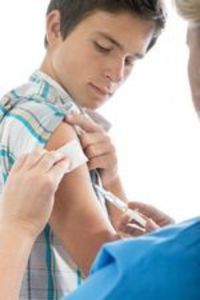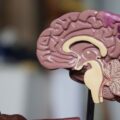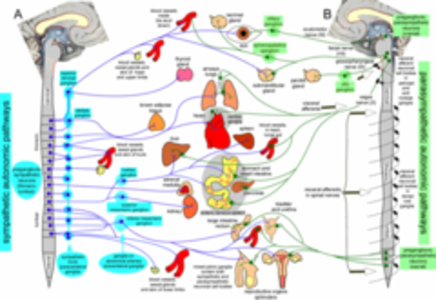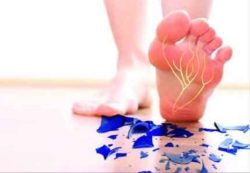Promotional campaigns for HPV vaccines have informed women that infections from HPV-16 and -18 are the cause of most cervical cancer. However, in 2006/7 when HPV vaccination programs were implemented globally, the scientific community knew that most women do not develop cervical cancer or warts after any type of HPV infection – including HPV-16/-18. HPV infections from all sub-types are found in high frequency among women with normal cervices and cervical cancer is a rare outcome from these infections. This demonstrates that HPV infection of any sub-type (including HPV-16 and -18) is not predictive of cancer; particularly as ninety percent of HPV infections have no clinical consequences at all. It has been known for decades that environmental and lifestyle co-factors are also necessary for HPV infections to progress to cervical cancer. This is why 83% of cervical cancer occurs in the developing countries.
Does the HPV Vaccine Prevent Cervical Cancer?
The promotional campaigns for HPV vaccines have been designed and funded by the pharmaceutical companies. This vaccine has not been demonstrated to prevent cervical cancer. It was trialled against a surrogate for cervical cancer – pre-cursor lesions (grade 2/3) in 15-26 year old women – and these lesions are not predictive of cancer later in life. More than 95% of high-grade lesions (CIN 3) in young women (15-26 years) regress without treatment. In addition, the phase 3 clinical trials that tested the vaccine against pre-cursor lesions were conducted from 2003 to 2007 and were not complete when the HPV vaccine was licensed by the US Food and Drug Administration in June 2006. The vaccine was fast tracked for approval by the FDA due to industry lobbying and Merck ensured that Gardasil® was not just approved for high-risk groups. The FDA approved the vaccine for universal use in all women even though it was known that many co-factors, that were not prevalent in developed countries (Australia, USA and UK), were essential for HPV infections to progress to cervical cancer. The time frame from application to approval of the HPV vaccine by the FDA was only 6 months and 3 weeks later the CDC recommended the vaccine for use in all women.
Yet the phase 3 clinical trials to determine the safety and efficacy of this vaccine against cervical cancer were not completed until 2007. In the US, the 1986 National Childhood Vaccine Injury Act removes liability from vaccine manufacturers for all design faults and negligence relating to their vaccines [1]. The US government has a no-fault compensation program that is tax-payer funded. This program removes all liability from the vaccine manufacturers and there is no onus to demonstrate that their products are safe and effective before they are implemented in the population. However, only Americans can seek compensation from the US government program. People who are harmed by HPV vaccines in other countries, such as Australia, receive no compensation from their governments.
Lobbying for HPV Vaccine Approval
Merck & Co is the manufacturer of the Gardasil® vaccine and when the medical director, Dr. Richard Haupt, was questioned about the speed with which the HPV vaccine was brought to the market he replied ‘Our hope and belief is that this is a remarkable vaccine that will have a huge impact on women’ [2]. ‘Hope’ and ‘belief’ are not the same as scientific evidence.
Politicians were lobbied and invited to receptions urging them to legislate against a ‘global killer’ [2]. Abramson, the chairman of the committee of the CDC that recommended the vaccine for all girls aged 11 or 12, stated ‘there was incredible pressure from industry and politics’ to approve this vaccine [2]. Diane Harper, a scientist involved in the development of the vaccine, agreed ‘Merck lobbied every opinion leader, women’s group, medical society, politicians and went directly to the people – it created a sense of panic that says you have to have this vaccine now’ [2]. In the US pharmaceutical companies are allowed to advertise directly to the public and the campaigns for HPV vaccines were very aggressive.
Educating Physicians about the HPV Vaccine
It was important for Merck to promote the vaccine through trusted sources and this was done by securing government reimbursement and mandates to promote the vaccine to all women, not just high-risk populations [3]. This enabled Merck to fund the professional medical associations (PMA’s) to promote the vaccine. The pharmaceutical companies supplied the medical associations with a Speaker Lecture Kit. This included ready-made presentations and letters to promote Gardasil® as a preventative for cervical cancer, even though the data was incomplete. The commercials for Gardasil® stated in small print ‘the duration of protection has not been established’ [2]. Much of the promotional material did not address the complexity of the issues surrounding the vaccine and did not provide balanced advice regarding the risks and benefits of the vaccine [3]. It was also presented in a way that obscured the involvement of pharmaceutical companies.
Doctors and nurses were recruited for an ‘Educate the Educators’ program created by the pharmaceutical companies to train health professionals to promote the vaccine. The PMA’s maintained a registry of educators and participants lectured to thousands of healthcare professionals. Hundreds of doctors were paid $4,500 per 50 minute lecture to present the information supplied by the pharmaceutical companies at Merck sponsored conferences [3]. They were also paid to attend advisory board meetings to discuss the vaccine [2]. In addition, there has also been an increase in cervical cancer awareness for patient groups financed with the help of Merck and GlaxosmithKline: often the financial support is indirect so patients are unaware that ‘expert’ advice has been paid for by the vaccine makers [2].
One of the Speaker Kit medical slides stated ‘Cervical cancer screening is described as secondary prevention identifying a precursor lesion; the HPV vaccine is primary prevention that would eliminate the cause of cervical cancer’ (Speaker Lecture Kit slide 13 in Rothman and Rothman 2009). This information is dishonest because it does not inform women that HPV alone is not sufficient to cause cervical cancer and also that there are 13+ other cancer causing strains of HPV that are not covered by the vaccine. Hence, the vaccine will not eliminate the cause of cervical cancer.
Whilst the slides acknowledged the uneven distribution of cervical cancer rates globally they did not draw attention to the risk factors that make cervical cancer a higher risk for women in developing countries. This knowledge is critical to women in determining the necessity for using this vaccine. The education campaigns emphasized the worldwide incidence of this disease whilst leaving out the risk factors for the disease and precautions about the risks of vaccines. Merck also funded the American College Health Association (ACHA) Vaccine Toolkit for clinicians [3]. This included talking points, sample e-mail messages to students and parents and sample press releases and public service announcements. At no time has the public been informed that the information they received on this vaccine was designed by pharmaceutical companies.
Protecting Population Health
The pharmaceutically funded promotional campaigns for HPV vaccines have maximized the threat of HPV infections and minimised the environmental and lifestyle co-factors that are necessary for the development of cervical cancer. The public places its trust in medical associations to provide non-biased science to health professionals for the promotion of medical products to the community. Clearly this trust has been breached in the case of HPV vaccines. At a minimum the public is entitled to be informed openly about relationships with industry and precise funding arrangements in order that they can weigh up the credibility of the information. This was an intentional deception as the pharmaceutical companies sought to present their information through trusted sources and the PMA’s condoned it.
Population health cannot be protected if there is no accountability for the health information that is supplied to doctors from industry funded research and presented to the community in the mainstream media.
About the author: Judy Wilyman MSc (Population Health), PhD Candidate University of Wollongong. More facts about HPV infections and the development of cervical cancer have been published in the Infectious Agents and Cancer Journal and can be accessed here: HPV vaccination programs have not been shown to be cost-effective in countries with comprehensive Pap screening and surgery.
References
- Habakus LK and Holland M (Ed), 2011, Vaccine Epidemic: how corporate greed, biased science and coercive government threaten our human rights, our health and our children. Center for Personal Rights.
- Rosenthal E, 2008, The Evidence Gap: Drug Makers Push Leads to Cancer Rise, The New York Times, August 20, accessed 21.12.09
- Rothman SM and Rothman DJ, 2009, Marketing HPV Vaccine: Implications for Adolescent Health and Medical Professionalism, Journal of the American Medical Association, Vol 302, (7) p. 781 – 785.
Participate in HPV Vaccine Research
Hormones MatterTM is conducting research on the side effects and adverse events associated with Gardasil and its counterpart Cervarix. If you or your daughter has had either HPV vaccine, please take this important survey. The Gardasil Cervarix HPV Vaccine Survey.
Hormones MatterTM conducts other crowdsourced surveys on medication reactions. To take one of our other surveys, click here.
To sign up for our newsletter and receive weekly updates on the latest research news, click here.
What Else Can I Do To Help?
Hormones MatterTM is completely unfunded at this juncture and we rely entirely on crowdsourcing and volunteers to conduct the research and produce quality health education materials for the public. If you’d like help us improve healthcare with better data, get involved. Become an advocate, spread the word about our site, our research and our mission. Suggest a study. Share a study. Join our team. Write for us. Partner with us. Help us grow. For more information contact us at: info@hormonesmatter.com.
To support Hormones Matter and our research projects – Crowdfund Us.







































